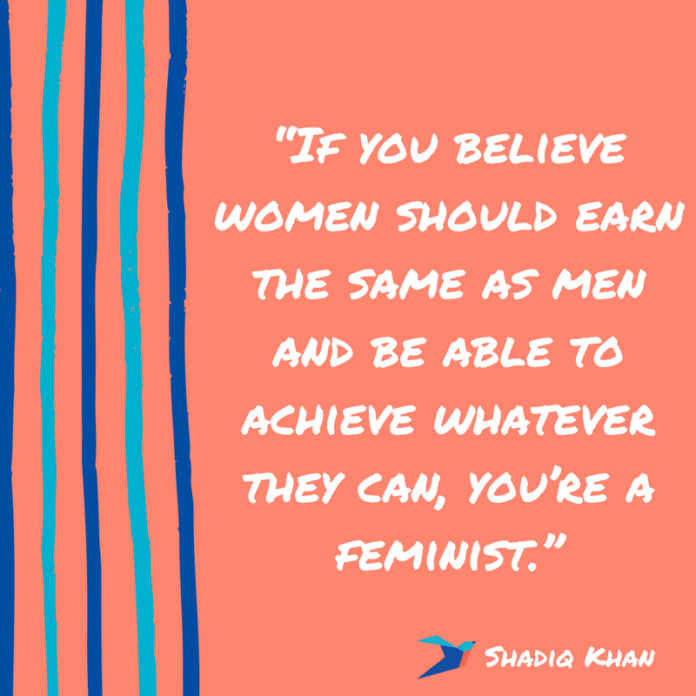In contemporary discourse, the term “feminism” elicits a plethora of responses and emotions, ranging from fervent admiration to vehement opposition. This complex social movement at its core advocates for the political, economic, personal, and social rights of women. However, throughout history, discussions surrounding feminism have often been punctuated by extreme statements attributed to its advocates. The following exploration examines some of the most audacious remarks associated with feminists, scrutinizing their veracity and the context within which they were made.
Feminism, as a term and a movement, has evolved remarkably since its inception. Diving into the annals of feminist thought unearths a trove of statements that have been both celebrated and vilified. Yet, to understanding whether these utterances represent fact or fiction, it is essential to analyze them within their historical and sociopolitical frameworks.
The Historical Context of Feminist Discourse
The roots of feminism can be traced back to the early 19th century, coinciding with the broader movements toward civil rights and social justice. Early feminists, such as Mary Wollstonecraft and Susan B. Anthony, articulated dreams of gender equality that appear radical to modern sensibilities. Wollstonecraft’s assertion that women ought to have access to education and autonomy was revolutionary, challenging the deeply entrenched patriarchal structures of her time.
Fast forward to the 1960s and 1970s, a period characterized by the second wave of feminism, where figures like Gloria Steinem became the face of the movement. Steinem’s censure of the societal expectations placed upon women marked a bold departure from traditional gender roles. Her proclamation, “A woman without a man is like a fish without a bicycle,” is emblematic of a radical shift in the narrative, positing independence and self-identity over subservience.
However, such statements, when taken out of context, have often been misinterpreted or caricatured. Critics of feminism frequently cite these remarks to paint feminists as misandrists or to imply that they advocate for the complete dismantling of heterosexual relationships. This misunderstanding perpetuates a fiction that undermines the genuine pursuits of gender parity.
Deciphering Hyperbole: Feminists or Firebrands?
Among the most contentious statements attributed to feminists revolve around notions of male oppression or the suggestion that women should dominate traditionally male spheres. Phrases like “Men are the enemy” are frequently resurrected in public discourse to suggest that feminists harbor an anti-male sentiment. Yet, it is crucial to ascertain the validity of these assertions.
Many feminists utilize hyperbolic language as a rhetorical device to provoke thought and stimulate critical discussions about gender dynamics. For instance, radical feminist theorist Valerie Solanas, who authored SCUM Manifesto, famously announced that “Society is male,” and proposed a world devoid of men. While this can be misinterpreted as a literal call for violence against men, Solanas’s work was, in essence, a critique of systemic patriarchy rather than an actual manifesto for a women-only society.
Similarly, the concept of “toxic masculinity” often ignites fiery debates. While some interpret the term as an indictment of all masculine traits, proponents argue it delineates harmful behaviors that are socially constructed and inflict damage upon both men and women. This nuanced distinction is often lost in translation, fostering misconceptions about feminist ideology.
Feminism and Identity Politics: Expanding the Conversation
The dialogue surrounding identity politics within feminist circles has given rise to a variety of voices, each contributing unique perspectives on gender, race, class, and sexuality. Intersectional feminism, championed by scholars like Kimberlé Crenshaw, emphasizes the interconnected nature of social categorizations and challenges the idea of a singular feminist experience. Voices from women of color, LGBTQ+ communities, and those with disabilities have augmented the discourse, compelling a broader understanding of feminism.
As such, statements made by intersectional feminists often reflect the complexities of navigating multiple oppressions. When a prominent figure like bell hooks asserts that feminism is for everybody, it elucidates the belief that the fight for gender equality must encompass all marginalized groups. Critics might misinterpret this as diluting feminism; however, it is instead an expansive call to rectify injustices that affect diverse populations.
Yet, this movement is not without its detractors. The very term “intersectionality” can evoke resistance, as it suggests a leveling of the feminist landscape that some perceive as subordinating traditional feminism. This dichotomy illustrates how interpretations of feminist rhetoric can distort or amplify its intent.
Revisiting Radical Rhetoric: The Bottom Line
While some of the wildest statements attributed to feminists undoubtedly carry hyperbolically radical connotations, it is paramount to analyze them through the lens of their original context. The intention behind such provocation often serves to challenge prevailing norms and prompt critical introspection regarding gender disparities.
Feminism, at its essence, seeks not to upend society but to reshape it into a more equitable arena for all genders. Misinterpretations and misconstructions of feminist rhetoric often stem from a failure to engage with the depth of its philosophical tenets. As societal norms evolve, so too must the conversations surrounding feminism remain fluid and adaptable to modern realities.
As the discourse progresses, it is integral to foster an environment receptive to listening, understanding, and debating perspectives rather than dismissing them as mere hyperbole. In doing so, one may discern the resilience of feminist thought, revealing the profound truths lying beneath the surface of sensationalized statements. In an era rife with polarized views, this collective endeavor will pave the way for a more nuanced appreciation of feminism and its aspirations for a just and inclusive society.
In conclusion, while some of the wildest statements attributed to feminists may seem outrageous at first glance, a closer examination reveals their roots in genuine grievances and aspirations for equitable treatment. The challenge lies in navigating these discussions with an open mind, free from reductive simplifications. By embracing the complexities inherent in feminism, one can appreciate its multifaceted nature and the rich tapestry of ideas that continue to inspire generations toward societal change.





























